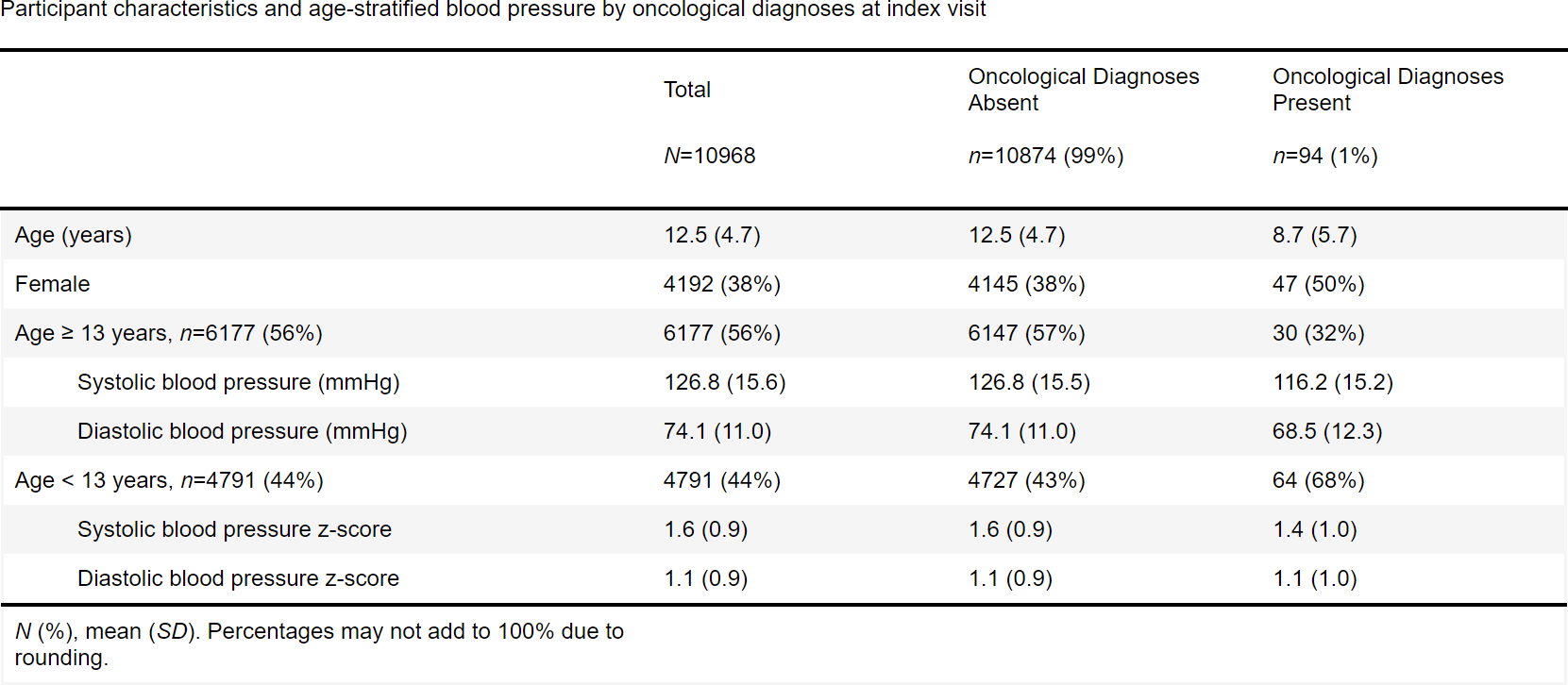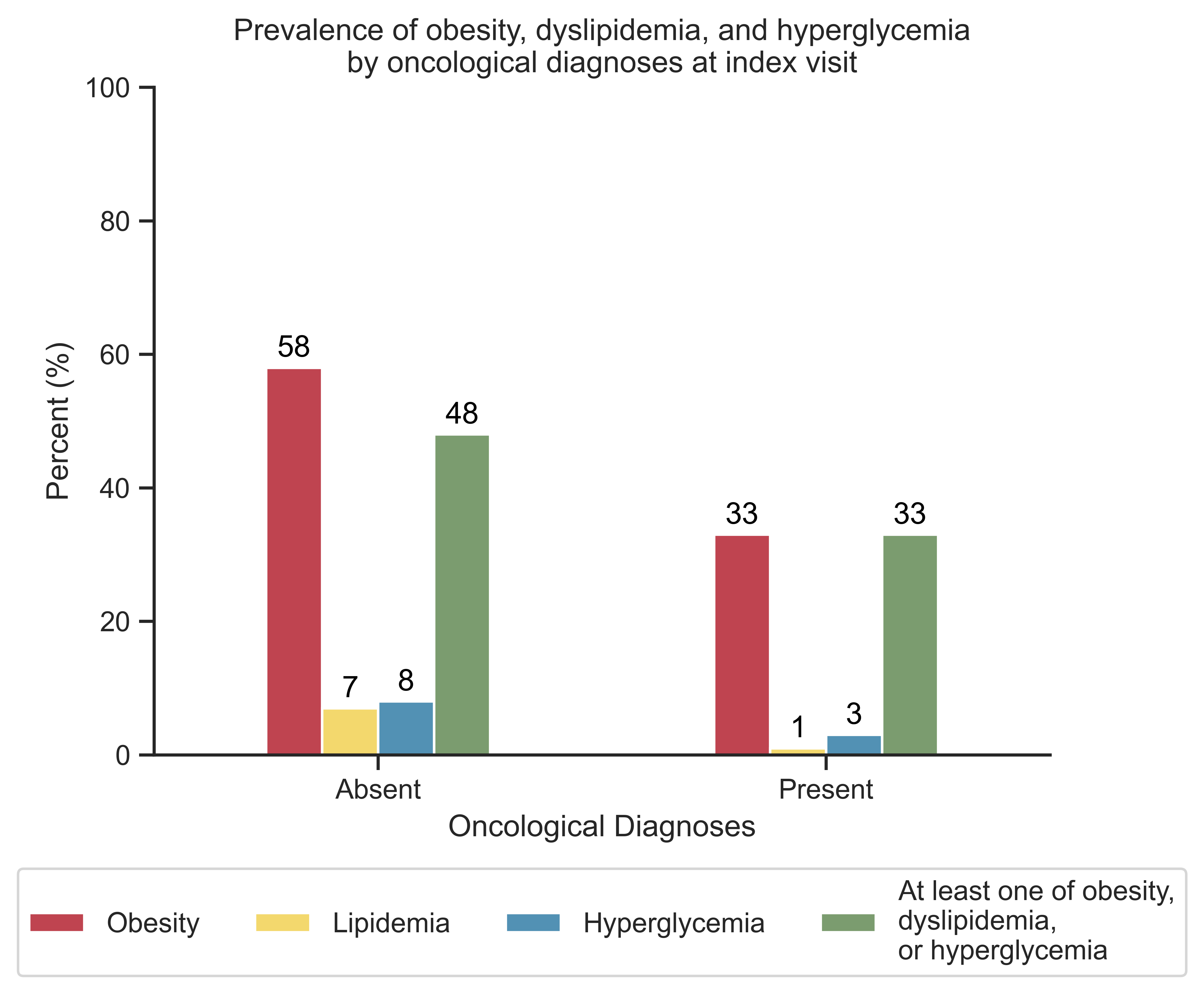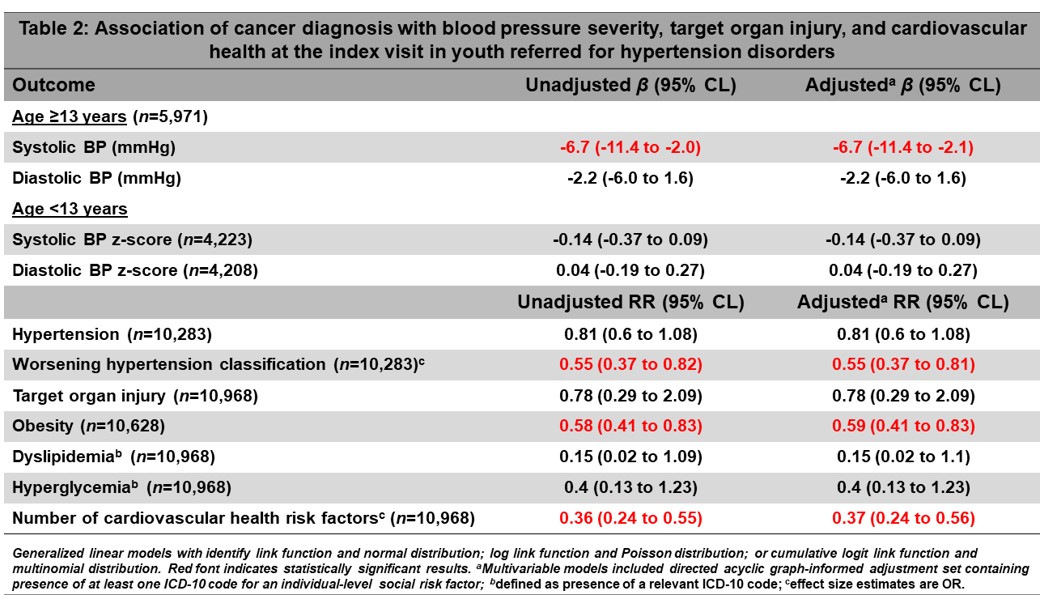Hypertension
Session: Hypertension
036 - Association of Oncological Diagnoses with Blood Pressure Severity and Cardiovascular Health at Baseline in Youth Referred for Hypertension Disorders: A SUPERHERO Analysis
Saturday, April 26, 2025
2:30pm - 4:45pm HST
Publication Number: 36.3884
Rushelle Byfield, NewYork-Presbyterian Morgan Stanley Children's Hospital, New York, NY, United States; Michael J. Walsh, Wake Forest School of Medicine of Wake Forest Baptist Medical Center, Winston-Salem, NC, United States; Andrew M. South, Wake Forest School of Medicine of Wake Forest Baptist Medical Center, Winston Salem, NC, United States

Rushelle Byfield, MD (she/her/hers)
Assistant Professor
Columbia University Irving Medical Center
New York, New York, United States
Presenting Author(s)
Background: Youth with cancer have higher prevalence of hypertension (HTN) and increased long-term cardiovascular (CV) disease risk. Little is known about prevalence of oncological diagnoses in youth referred to subspecialists for diagnosis and management of HTN and whether these diagnoses are associated with worse HTN and known CV health risk factors.
Objective: Determine the prevalence of oncological diagnoses in youth referred for HTN and if an oncological diagnosis is associated with blood pressure (BP) severity and CV health.
Design/Methods: Cross-sectional analysis of baseline data from the Study of the Epidemiology of Pediatric Hypertension (SUPERHERO), a multisite registry of youth referred to subspecialty care for HTN disorders that retrospectively collects electronic health record data validated with manual health record review. Inclusion criteria were initial visit for HTN disorder identified by ICD-10 codes from 1/1/2015 to 12/31/2022 and age < 19 years. Exclusion criteria were kidney failure on dialysis, kidney transplantation or pregnancy by ICD-10 codes. Exposures were oncological visit diagnoses by ICD-10 codes. Outcomes were markers for CV health including BP severity per national guidelines, obesity as body mass index or weight-for-length ≥95th %ile and dyslipidemia, hyperglycemia and target organ injury by ICD-10 codes. Adjusted generalized linear models were used to determine the association of cancer diagnosis with markers of CV health.
Results: Of 10,968 participants in this analysis, 38% were female and the mean age was 12.5 years (SD 4.7) (Table 1, Figure 1). 94 participants (1%) had an ICD-10-coded visit diagnosis for cancer and had mean age 8.7 years (SD 5.7). Adolescents with cancer diagnoses had 6.7 mmHg lower systolic BP (95% CL -11.4 to -2.1), lower odds of worsening BP classification (OR 0.55, 95% CL 0.37 to 0.81), 41% lower risk of obesity (RR 0.59, 95% CL 0.41 to 0.83) and lower odds of having multiple CV health risk factors (OR 0.37, 95% CL 0.24 to 0.56). Cancer diagnoses were not associated with TOI (Table 2).
Conclusion(s): In a diverse multisite cohort of youth referred for HTN, we observed that those with cancer diagnoses had less severe blood pressure, lower risk of obesity and lower odds of having multiple CV health risk factors. This potentially reflects lower thresholds for HTN referral in this at-risk population. Future analyses will determine if there are specific oncological diagnoses that are associated with poor CV health outcomes which will inform future studies regarding optimal surveillance and management in this group.
Table 1. Participant characteristics and age-stratified blood pressure by onocology diagnosis at index visit

Figure 1. Prevalence of obesity, dyslipidemia, and hyperglycemia by oncological diagnoses at index visit

Table 2. Association of cancer diagnosis with blood pressure severity, target organ injury, and cardiac health at the index in youth referred of hypertension disorders


